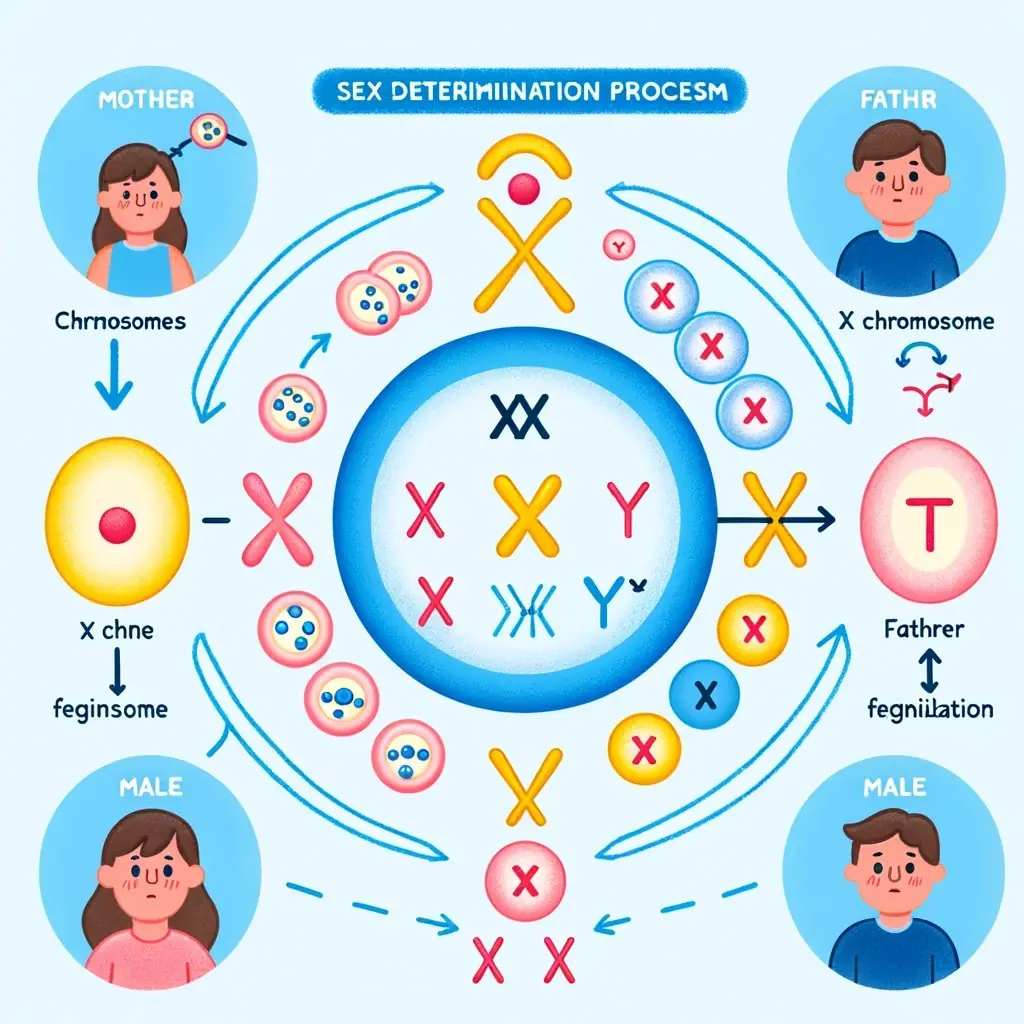
Understanding Human Sex Determination: The Role of Chromosomes and Genetic Factors

Introduction
The determination of sex in humans is a fascinating and intricate biological process. This process is governed by genetics, specifically the chromosomes inherited from the parents. Unlike some species where environmental factors like temperature play a role, human sex determination is purely genetic.
The Basics of Human Chromosomes
Human cells contain 23 pairs of chromosomes, totaling 46. These chromosomes carry the genetic blueprint of an individual. Among these, 22 pairs are called autosomes and are common to both males and females. The 23rd pair is known as the sex chromosomes, and it differs between males and females.
Sex Chromosomes and Their Role
In females, the 23rd pair is comprised of two X chromosomes (XX), while in males, it consists of one X and one Y chromosome (XY). The presence or absence of the Y chromosome plays a crucial role in determining the sex of the offspring.
Meiosis: The Process of Gamete Formation
Meiosis is a specialized form of cell division occurring in the reproductive organs. During meiosis, the number of chromosomes in gametes (sperm and egg) is halved. This reduction is crucial for maintaining the chromosome number from generation to generation.
Fertilization and Sex Determination
At fertilization, a sperm (carrying either an X or a Y chromosome) fuses with an egg (carrying an X chromosome). If the sperm contributes an X chromosome, the resulting zygote is XX, developing into a female. If the sperm contributes a Y chromosome, the zygote is XY, developing into a male.
Decisive Role of the Male in Sex Determination
While both parents contribute equally to the offspring’s genetic makeup, it is the father’s sperm that determines the sex. The mother always provides an X chromosome, making the father’s contribution of X or Y chromosome decisive.
Variations in Sex Determination
While the XX/XY system is standard for humans, other animals have different systems. For instance, birds often use a ZW system, and some reptiles’ sex determination is influenced by environmental factors.
Conclusion
Understanding the mechanism of sex determination in humans not only enlightens us about our own biology but also offers insights into genetic inheritance patterns. It’s a testament to the complexity and precision of genetic processes shaping life.